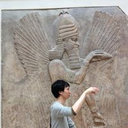(+)-Syringaresinol-di-O-beta-D-glucoside, a phenolic compound from Acanthopanax senticosus Harms, suppresses proinflammatory mediators in SW982 human synovial sarcoma cells by inhibiting activating protein-1 and/or nuclear factor-kappaB activities.
Ključne riječi
Sažetak
(+)-Syringaresinol-di-O-beta-D-glucoside (SR), syringin, and isofraxidin isolated from the stem bark of Acanthopanax senticosus Harms are its major constituents. The present work was undertaken to analyze effects of these compounds on inflammatory functions in SW982 human synovial sarcoma cell system. When cells were exposed to SR, syringin, or isofraxidin, only isofraxidin had significant inhibitory effects on cell growth, although a slight inhibition was observed at the highest concentration of SR. SR suppressed the production of IL-6 at lower concentrations than syringin and isofraxidin. SR and syringin significantly suppressed the production of prostaglandin E(2), while isofraxidin suppressed only slightly. SR was more potent than syringin and isofraxidin at inhibiting the expression of IL-1beta, IL-6, cyclooxygenase (COX)-2 and matrix metalloproteinases (MMP)-1 mRNA, but was less potent than syringin at inhibiting the expression of MMP-2. We further demonstrated that SR significantly reduced MMP-1 promoter luciferase activity and DNA-binding activity of transcriptional factors AP-1 and NF-kappaB. Taken together, these results suggest that SR, an active component of the stem bark of A. senticosus, modulates the inflammatory process involved in arthritis by suppressing various gene expression through inhibiting AP-1 and/or NF-kappaB activities.


